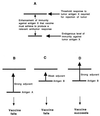Inducing autoimmune disease to treat cancer
- PMID: 10318881
- PMCID: PMC33572
- DOI: 10.1073/pnas.96.10.5340
Inducing autoimmune disease to treat cancer
Figures

Comment on
-
Vaccination with a recombinant vaccinia virus encoding a "self" antigen induces autoimmune vitiligo and tumor cell destruction in mice: requirement for CD4(+) T lymphocytes.Proc Natl Acad Sci U S A. 1999 Mar 16;96(6):2982-7. doi: 10.1073/pnas.96.6.2982. Proc Natl Acad Sci U S A. 1999. PMID: 10077623 Free PMC article.
References
-
- Prehn R T. J Natl Cancer Inst. 1957;18:769–778. - PubMed
-
- Schreiber H, Ward P L, Rowley D A, Strauss H J. Annu Rev Immunol. 1988;6:465–483. - PubMed
-
- Kastan M B, Zhan Q E L, Deiry W S, Carrier F, Jacks T, Walsh W V, Plunkett B S, Vogelstein B, Fornace A J J. Cell. 1992;71:587–597. - PubMed
-
- Old L J. Cancer Res. 1981;41:361–375. - PubMed
MeSH terms
Substances
LinkOut - more resources
Full Text Sources
Other Literature Sources
Medical

